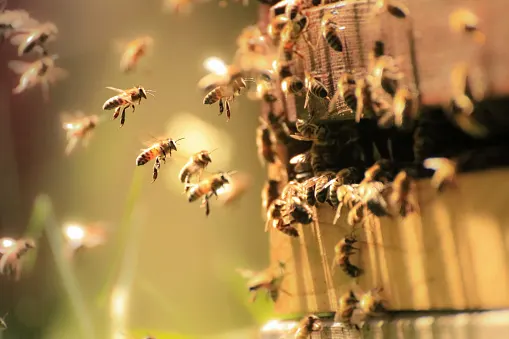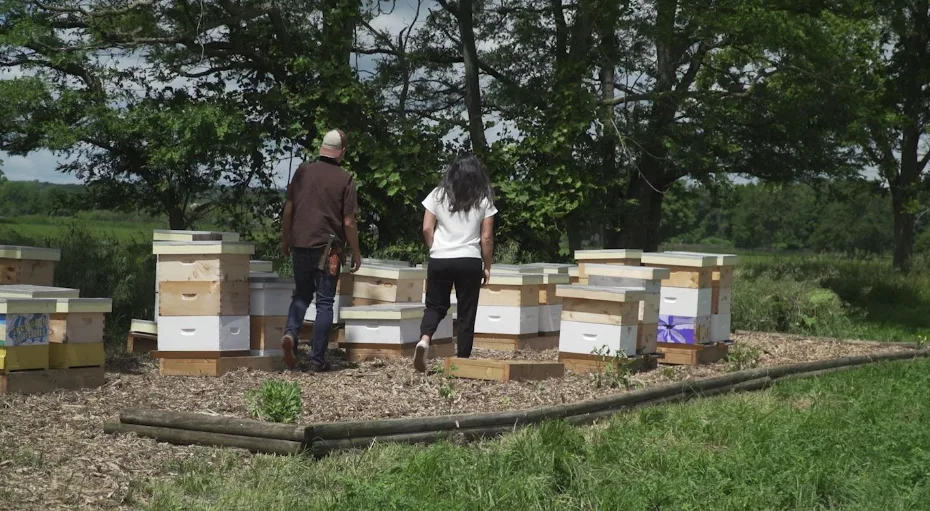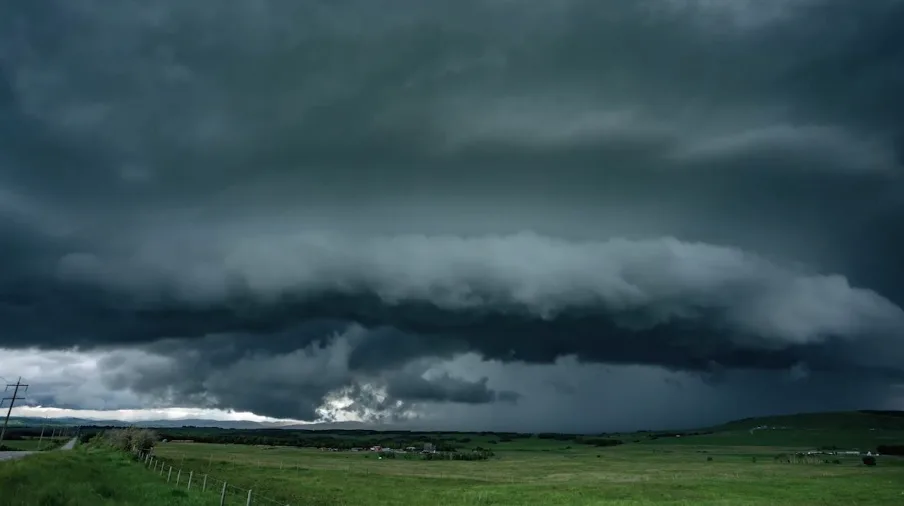
You're more likely to get stung in certain types of weather
We asked a beekeeper to spill his industry secrets.
Honeybees can become irritable in certain types of weather, and it increases their urge to sting, according to a beekeeper I recently spoke with.
“Typically as a beekeeper when you see a thunderstorm you are either suiting up or getting out of there,” David Stotesbury, a beekeeper with Backed By Bees in Burlington, Ontario, tells me.
I had a chance to tour David's bee farm, and he let me in on a few secrets when it comes to a stir-crazy bee!

Courtesy: Rachel Shoutsen/The Weather Network.
Stir-crazy:
“Big changes in air pressure can make the nicest colony of bees grow a pair of horns! What ends up happening is, pretty much every bee is stuck at home,” David says.
Feel the vibe:
Bees can feel our vibrations from up to 7 metres away!
“A bee won't go out of their way to sting you, but if you are close to their hive the potential increases, especially in inclement weather.”
If the following is in the forecast, a bee is more likely to sting:
Thunderstorms
Incoming low-pressure system
A drop to below seasonal temperatures

Credit: Kyle Brittain/The Weather Network
Plants and flowers also react to changes in weather, and that plays a role in irritating the bee.
“If you have a cooler day or there is a bit of rain out there the plants won't release that nectar. So all of a sudden you have this huge massive bee force with nothing to do,” says Stotesbury.
As bees become older, they take on riskier jobs. They travel further from the hive and may have to encounter predators like birds. This makes them a little more aggressive.
While yes, you could get a bee sting on a nice sunny day the chances rise when the weather is active!
Thumbnail image courtesy: Getty.






